Top>HAKUMON Chuo [2014 Autumn Issue]>The 24th Chuo University President’s Cup The Mederu-kun Project Report
 Index
Index
Close UP
The 24th Chuo University President’s Cup
The Mederu-kun Project Report

This report gives an overview of the Chuo University President’s Cup Sports Tournament and the Mederu-kun Project held on July 6 and July 13.
About the Project
The Chuo University Cup is part of the university’s activities to give back to the community by opening up its facilities to the people living in the Tama area.
This marks the 24th year since this historical event first started. Beginning from last year (The 23rd Cup), Chuo University student volunteers from the FLP Sports and Health Science Program have concurrently held a sports-related event called the Mederu-kun Project.
We created six groups which focused on management, external relations, public relations, food, original events and seminar planning, and conducted activities for 6 months.
Event Details
- Lecture: Nutrition for a Stronger Body—Think When You Eat!
- A nutritionist was invited to give a lecture on dietary habits to build a body suitable for playing sports.
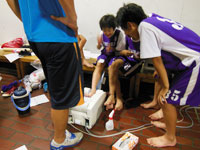
- Learn about Your Body
- Measurement of bone densitometry and diagnosis for 4 Stance Theory*.
*Theory stating that people are born with one of four types of body characteristics.
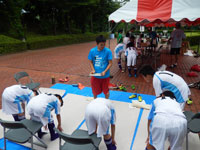
- Sports Workshop
- Through instruction given by university student staff members, participants enjoyed trying karate, indiaca, unihoc, long rope jumping, trampoline and flying disc.
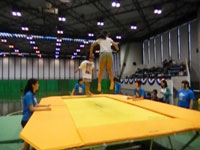
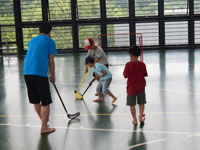
- Stamp Collection Event
- Participants will receive special gifts by collecting stamps at the Sports Workshop and Learn about Your Body events.
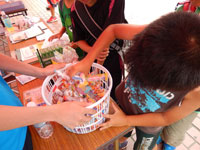
Student Volunteer Teams
- Management
- The Management team was responsible for organizing each team to get together and ensuring that all members cooperate with each other. As the core of the Mederu-kun Project, the management provided overall supervision and responded to unexpected happenings during the Chuo University President’s Cup.
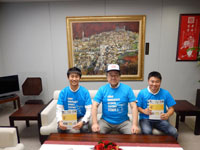
- Food
- “Is there any place to buy food?”—Student volunteers were often asked this question at last year’s Chuo University President’s Cup. In response, we negotiated with the school cafeteria and arranged for operation of the Leaf Café in C Square.
- Public Relations
- In order to raise awareness for the Mederu-kun Project, the PR team conducted advertising activities by creating posters, managing the homepage and SNS, and negotiating to advertise in the university paper. The team also designed event pamphlets and T-shirts.
- External Relations
- The External Relations team asked corporations in the Tama area for their support in the Mederu-kun Project. We succeeded in obtaining novelty goods from several companies. These goods were distributed to participants as prizes for the Stamp Rally and other events.
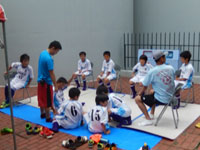
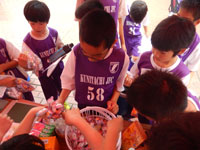
- Original Events
- The Original Events team was in charge of the Stamp Rally Event and Sports Workshop this year. We asked the Karate Club for their support and organized a karate workshop. We also operated workshops for the new sports, indiaca and unihoc.
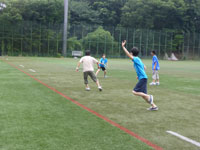
- Seminar Planning
- The Seminar Planning team was in charge of the Learn about Your Body lecture for this year’s project. Beginning with the search for a speaker, we arranged the venue and conducted advertising activities. Students were able to use their knowledge about bone densitometry and 4 Stance Theory that they gained through their research in the FLP seminar. This enabled us to plan an event unique to Chuo University students.
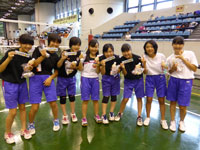
Upon completion of the 24th Chuo University President’s Cup Sports Tournament
An out-of-class experience
Yumi Ito
3rd Year Student at Faculty of Letters
I was a member of the Public Relations team. This year marked the 24th Chuo University President’s Cup Sports Tournament, and the Mederu-kun Project began just last year.
In order to further deepen our interaction with the Tama community members, senior students left us with a report to help guide the volunteers in the next school year.
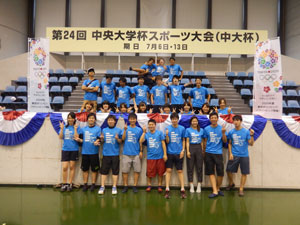
There were countless issues to address for the project. We started by setting up a new homepage. This was the first step in attracting people to the event.
We implemented numerous plans including a lecture given by a nutritionist, a sports workshop and a stamp rally event. These events were made possible thanks to the support of many people.
Nutritionist Tomoko Konishi agreed to give a lecture entitled “Nutrition for a Stronger Body—Think When You Eat!” This lecture seemed like it would interest mothers who worry about their children’s dietary habits. The children would most likely enjoy the stamp rally event. It would be interesting to see what kind of people would gather to have their bone densitometry measured.
Each event targeted a different audience. Student volunteers worked to assess detailed information, considering what articles to cover the top of their homepage and which audience they are aiming at.
The Advertising team and Original Events team worked at the same time. Sometimes, although we wanted to conduct advertising activities, event details had yet to be finalized. In such cases, advertising activities were pushed back. We were worried that this would affect our ability to attract participants.
The Original Events team worked excessively. Knowing that, it was difficult to pressure them with repeated requests. However, we wanted to start advertising activities as early as possible. I grew quite anxious and impatient.
It was also difficult to gather materials and decide upon a layout for articles and photographs. Despite how hard it was, I enjoyed this type of work. It was necessary to write simple copies that would strike the hearts of readers. Lengthy and verbose ads were unacceptable. We started our activities in April and spent about three months of trial and error before finalizing our homepage.
One trouble after another
Upon entering the stage of creating a link, we encountered a new problem. We couldn’t place too much emphasis on the cooperating corporations. This had been pointed out before we started creating the homepage, and we had kept this in mind during the creation process.
Next, we created a poster featuring event details. We then visited local supermarkets, elementary schools, junior high schools and nearby city halls to ask for cooperation in displaying the poster. I was placed in charge of city halls and visited government offices in Machida City, Kunitachi City and Fuchu City. Upon explaining the purpose of visit at the information desk located near the office entrances, I was introduced to representatives from related departments. At some government offices, I was allowed to freely post material on bulletin boards, while at others I went through several departments in a confusing series of procedures.
I later learned that procedures would have gone more smoothly by bringing a certificate of support from the city’s Board of Education.
It made me happy to see our poster on the Tama City Hall bulletin board at the Tama Center. Normally, we walk right by posters or give little thought while looking at them. However, my work on the Mederu-kun Project made me realize the passion put into each poster.
Before the storm
Shortly before the scheduled event day July 6th, the weather forecast said a typhoon was approaching. From that moment onward, our eyes remained glued to the weather forecast webpage. Would our event be postponed or would it be canceled? If the event was postponed, do we need to change the time schedule? I was nervous every day. When I heard the happy announcement that the typhoon had changed course and the event would be held according to plan, my heart leapt with joy.
The day of the event was blessed with the sun. In order to prevent heat stroke, we frequently encouraged children to drink water. To prepare for an emergency, student volunteers learned how to perform first aid using an AED (Automated External Defibrillator) and underwent training in cardiac massage.
I learned that when we organize events, we need to be prepared for emergencies and prevent danger. I still remember the thrill that I felt after the two-day event ended without any trouble. I felt as if all the tension had drained from my body.
●
Volunteers eventually realized that we failed to sufficiently consider the perspective of participants when preparing. “Where is C Square?”—Although any Chuo University student studying on the Tama Campus knows their way around, it was necessary to provide detailed guidance to first-time visitors. Tama Campus is situated on a broad area about 11 times the size of Tokyo Dome. Getting lost during the peak of summer is something no one wants to endure. We definitely didn’t want to leave a bad impression on visitors who had come with an interest in our university. In this way, considering each element of our plan through multiple perspectives helped us identify issues requiring action.
In the end, the Mederu-kun Project ended successfully without any major problems. I felt a great sense of satisfaction when visitors said that they came after seeing our homepage or pamphlet.
For student volunteers, the project was an opportunity to grow and make new friends. I had many wonderful experiences.
To bring further happiness and energy to the Tama community and its residents, it is now our turn to provide the younger students with a report to support their activities.

[Further Details]
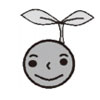
The project name Mederu combines the meaning of the Japanese phrases mederu, which means to “momentarily forget everything and enjoy the sight of beauty” (definition taken from the Shinmeikai Japanese Dictionary) and me ga deru, which means to sprout or grow.
- Research Activities as a Member of Research Fellowship for Young Scientists (DC1), Japan Society for the Promotion of Science (JSPS) Shuma Tsurumi
- Important Factors for Innovation in Payment Services Nobuhiko Sugiura
- Beyond the Concepts of Fellow Citizens and Foreigners— To Achieve SDGs Goal 10 “Reduce Inequality Within and Among Countries” Rika Lee
- Diary of Struggles in Cambodia Fumie Fukuoka
- How Can We Measure Learning Ability?
—Analysis of a Competency Self-Assessment Questionnaire— Yu Saito / Yoko Neha - The Making of the Movie Kirakira Megane








